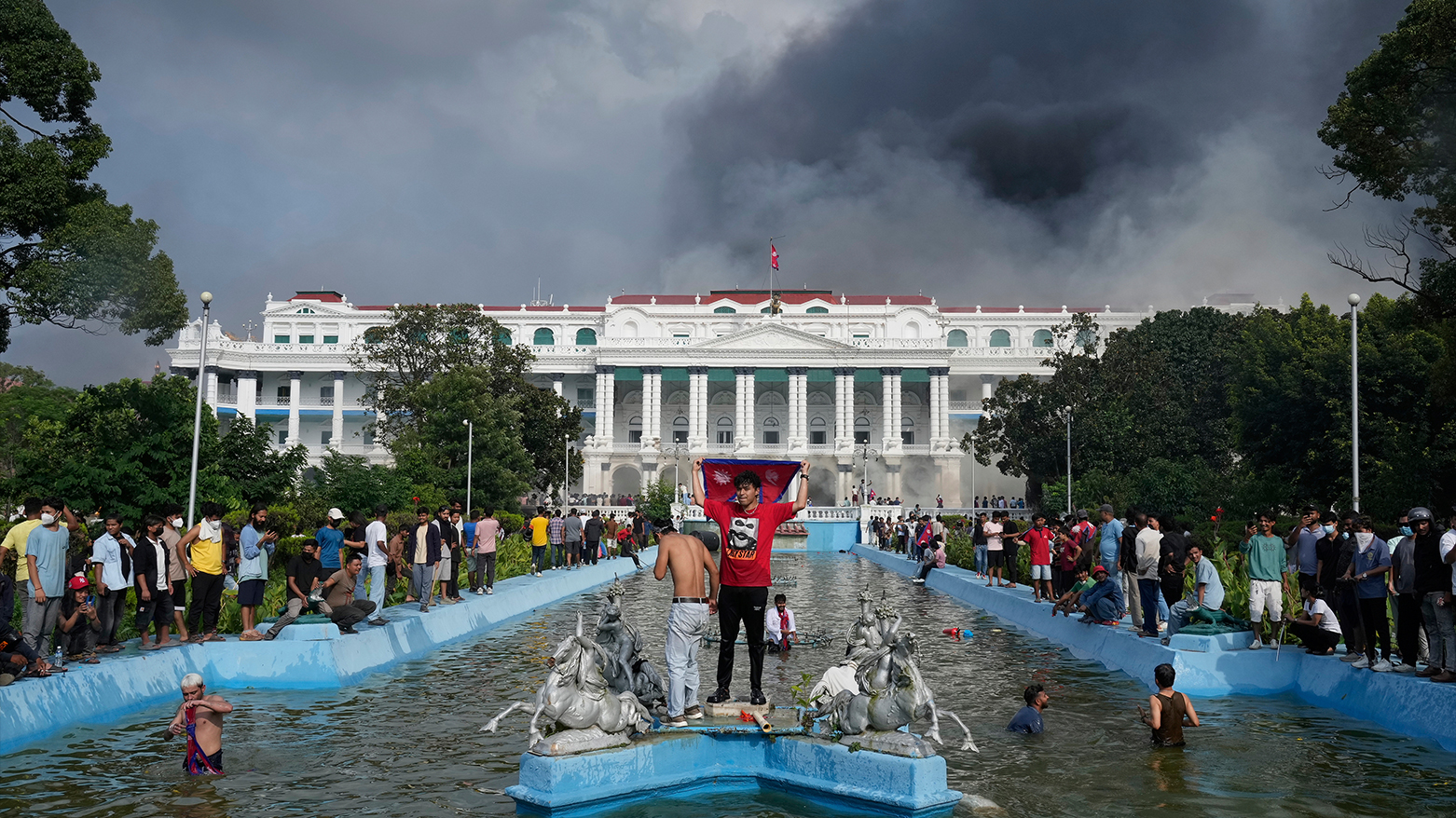At Least 19 Killed in Nepal as Protests Against Corruption and Social Media Ban Erupt in Violence
At least 19 people have been killed in Nepal after youth-led protests against government corruption and a social media ban were met with force by security forces. The violence has prompted the resignation of the Home Minister and a call for an investigation from the United Nations.

ERBIL (Kurdistan24) – A wave of youth-led demonstrations against government corruption and a sweeping social media ban has descended into deadly violence in Nepal, leaving at least 19 people killed and dozens more injured after security forces clashed with thousands of protesters in the capital, Kathmandu, and other cities.
The protests, organized by a movement describing itself as "Generation Z," have exposed deep-seated public anger over political graft and economic mismanagement, culminating in a crisis that has prompted the resignation of the country's Home Minister and drawn condemnation from the United Nations.
The unrest was ignited after thousands of demonstrators heeded a call to gather near the parliament building in Kathmandu, initially galvanized by the government's recent decision to ban 26 popular social media platforms, including Facebook, X, and YouTube.
However, what began as a protest against censorship quickly transformed into a broader expression of profound dissatisfaction with the state of the nation. Protesters brandished placards with slogans such as "enough is enough" and "end to corruption," signaling that the social media ban was merely the flashpoint for long-simmering grievances.
As one protester, Sabana Budathoki, explained to the BBC, the ban was "just the reason" for the gathering. "Rather than [the] social media ban, I think everyone's focus is on corruption," she stated, adding, "We want our country back - we came to stop corruption." Another protester described the ban as an attempt by an authoritarian government to "silence" their voices, vowing to continue their demonstrations until meaningful change is achieved.
The government has defended its decision to block the platforms, which have millions of users in Nepal who rely on them for news, communication, and commerce. Officials have argued that the measure is not an outright ban but an attempt to regulate the digital space to combat the spread of fake news, hate speech, and online fraud, bringing the platforms in line with Nepali law.
Last week, authorities ordered the platforms blocked for failing to comply with a registration deadline, though two have since been reactivated after registering with the ministry. Many users have resorted to using Virtual Private Networks (VPNs) to circumvent the restrictions.
The situation escalated dramatically when the rally in Kathmandu moved toward a restricted area near the parliament building. According to reports, some protesters managed to climb over a security wall, leading to a direct confrontation with security forces. While the precise trigger for the ensuing violence remains unclear, the response from law enforcement was severe.
Nepal's Minister for Communication, Prithvi Subba, confirmed to the BBC that police had to use force, which included deploying water cannons, wielding batons, and firing rubber bullets into the crowds. Shekhar Khanal, a spokesman for the Kathmandu Valley Police, told the AFP news agency that security forces also used tear gas after protesters breached the restricted zone.
The clashes resulted in a significant loss of life. Khanal confirmed that 17 people were killed in the capital. The chaos spilled into medical facilities, with Ranjana Nepal, an official at a hospital that received many of the injured, telling AFP that tear gas had penetrated the building, severely hampering the ability of doctors to treat the wounded. "I have never seen such a disturbing situation at the hospital," she said.
In the aftermath, a spokesperson for the Kathmandu district office announced that a curfew had been imposed in areas surrounding the parliament building. Following the curfew announcement, the violence spread, with local police reporting that two more people were killed during protests in the eastern city of Itahari. In response to the escalating crisis, a small unit of the Nepali army was deployed to the streets, a move confirmed to the BBC by Army Spokesman Rajaram Basnet.
The deadly outcome of the protests has had immediate political repercussions. On Monday evening, Home Minister Ramesh Lekhak resigned during a cabinet meeting. According to The Kathmandu Post newspaper, a minister present at the meeting stated that Lekhak stepped down on moral grounds following the deaths of the protesters.
The international community has responded with alarm. The United Nations Human Rights Office has called for a "prompt and transparent investigation" into the killings and urged the Nepali government to reconsider its measures for regulating social media.
In a statement, the office's spokesperson, Ravina Shamdasani, said the UN had received "several deeply worrying allegations of unnecessary or disproportionate use of force by security forces" during the demonstrations. The events have left Nepal in a state of high tension, with a determined youth movement confronting a government now grappling with a crisis of legitimacy and a rising death toll.
